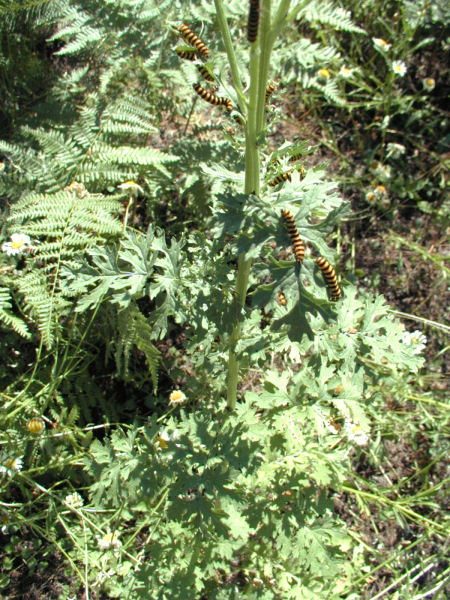
|
Flowers Growing at Our Home Tansy Ragwort Senecio jacobaea Eurasian weed first reported in Oregon in 1922. It spreads primarily by seed--a single tansy ragwort plant may produce up to 150,000 seeds, which may remain viable for up to 15 years. All parts of this weed are poisonous. It causes liver damage to cattle and horses, while sheep are affected to a lesser extent. Tansy ragwort is a biennial or short-lived perennial. Seeds germinate the first year and form a rosette of raggedly lobed leaves up to 9 inches long. Flower stalks develop the second year, growing up to 6 feet tall, with many branches near the top. Stem leaves are 2 to 3 times pinnate with blunt tips and blades that attach directly to the stalk. Numerous yellow, 1-inch wide, daisy-like flower heads with golden or light brown centers form at the tip of each branch from midsummer to fall. Seeds are tiny and are tipped by hairlike plumes that carry seeds in the wind for long distances. The cinnabar moth eats the leaves of tansy ragwort. With the flea beetle working on the roots and the ragwort seed fly eating the seeds, the fearsome threesome has worked wonders-- almost too good, since so much of the weed has been destroyed over the past 20 years that there hasn't been enough tansy to maintain high populations of the bugs. The result this summer has been a sporadic but definite reappearance of the poisonous weed. We discovered this one in our flower bed. I observed 11 cinnabar moth larvae happily eating on it. ⇦ Back to Previous Flower On to Next Flower ⇨Hi-Res Pic (272K) |
| Return to Flower Thumbnail List Page 5 Return to Thumbnails Page 29 Return to Alphabetic List Page 5 | |